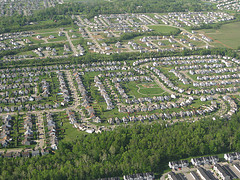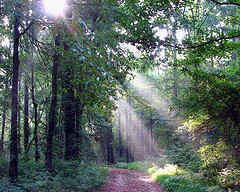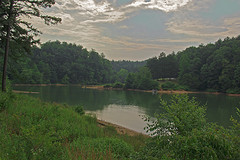Are Southern Forests Running Out of Time?
By: Amos S. Eno
Posted on:09/01/2010The Forest Service and Gary Myers are Worried About the Future of the World’s Most Diverse Temperate Forests
This week we are treated to the perspective of another former public servant, Gary Myers, who for more than 30 years directed the Tennesee Wildlife Resources Agency. Gary is now semi-retired and works half-time for a new forestry initiative, the Partnership for Southern Forest Land Conservation.

Gary pointed out right away that the recent Forest Service report, “Private Forests, Public Benefits,” predicts huge losses of forest to development in the South. Ten of the top 15 watersheds in the nation with the greatest housing density increases on private lands will be in the Southeast. “I would not want to be the head of TWRA in 2050, managing wildlife between fences in people’s backyards.”
Development Pressures on Commercial Timber
Echoing the thoughts of Carter Smith, director of Texas Parks and Wildlife, Gary said that in the 1980s, commercial timber companies began selling their lands off to TIMOs or Timber Investment Management Organizations, and later REITs, or Real Estate Investment Trusts. The reason for this, according to Carlton Owen, long-time forester and President of the U.S. Endowment for Forestry and Communities, was simple economics.
TIMOs were established by large pension funds to diversify their holdings into more tangible assets. TIMO funds are taxed only once, whereas timber companies are taxed twice, once on income and once on payouts to shareholders. There was no way they could compete. The result has been, in Carlton’s words, that “we have witnessed in 35 years - one generation - a transition from a decades-old tradition to an entirely new class of ownership models.”
Moreover, TIMOs and REITs, looking to maximize returns for their shareholders, were more open to selling parcels for development. On the other hand, they cannot justify donating conservation easements because their special tax status makes them ineligible for tax deductions. In the opinion of many, this change in the forest industry has been a primary driver of increasing development and fragmentation of forest lands across the country.
Development Pressures on Family Forests
As I’ve noted in this blog before, there are at least two trends affecting southern family forests right now:
- The demographics of forest ownership will likely result in roughly 45 percent of forestland changing hands within the next 5 to 10 years.
- The younger generation, who are more distanced from the land, place more emphasis on receiving income from their forests.
A Decade, Then the Ball Game’s Over“If you live in the East,” says Gary, “you begin to look ahead and ask where will people be recreating if all this land goes into houses

?” And where will they get their water? Logically, you might say we need to zone land, but take it from Gary when he says, “in the South you don’t zone.”
“Maybe we’ve got a decade to play with, then the ball game’s over,” he says. “If the economy comes back, prices will escalate again, and TIMOs could sell at a profit. Right now there’s a window of opportunity” to use government funds to protect lands permanently.
Southern forests are among the most productive in the world. “That’s an infrastructure we need to take care of as a country! Where are we going to get the wood to build all these houses by 2030? It would be good if we could grow it at home.”
Political Correctness or Biggest Bang for the Conservation Buck?I asked Gary what he thought we should be doing. His answer, in a roundabout way, was to make bigger payouts to the large landowners . . .
“If I’m a TIMO and I tweaked my management in the right way just a little bit, I could make Partners in Flight (the intern

ational migratory songbird conservation initiative) smile.” For example, the understory in longleaf pine habitats needs burning every three years or so. If large timber interests had the resources to do that, “we could bring quail back, probably.” Other forest treatments that are compatible with forest objectives could be implemented as well, to favorably impact habitats for a variety of songbirds.
“So why can’t the Farm Bill subsidies pay me if I have huge acreages? If I have 25 acres, they’ll pay. The answer: because there’s a cap on the payments. But if tweaking the management of a million acres will have huge payoffs for wildlife, why not pay? Tweaking a million acres for birds means you did something!” And it takes far less work and staff time to work with one large landowner than with many small landowners.
Gary’s bottom line is that the Farm Bill started out as a subsidy, and “government doesn’t want to subsidize the wealthy.” But now that the Farm Bill focuses much more on conservation, certain payment caps don’t make as much sense.
I agree with Gary, but I still maintain that working with small landowners is key. They are often the landowners most susceptible to economic pressures to convert their land. As a country, we still have not established a legal, tax, and conservation framework that provides sufficient incentives to the “little guy” to protect and manage his or her land.
Gary believes, “If our country really cares about forest conservation and wants to enhance quality of life, we won’t worry about making a rich guy richer. We’ll just worry about huge impacts on landscapes to benefit the public, wildlife, air, and water.”

And I believe if we care about working lands, we’ll put a policy framework in place that gives small landowners sufficient ability to support themselves without selling out, because we all rely on those lands for much more than simply timber.
 Sign In
Sign In
 Sign In
Sign In
